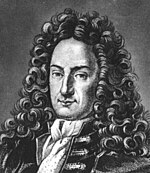শক্তিৰ সংৰক্ষণশীলতা
| এইটো এটা অনূদিত বা অনুবাদ চলি থকা প্ৰবন্ধ। ইয়াৰ তাৎপৰ্য্য কেইবাটাও হ'ব পাৰে। অধিক জানিবৰ বাবে সোঁফালে থকা [দেখুৱাওক] লিংকটোত ক্লিক কৰক।
ওপৰত দিয়াৰ দৰে বিভিন্ন কাৰণত অনুবাদ প্ৰবন্ধ এটা দেখাত আপচু বা চুটি দেখা যাব পাৰে। লগতে প্ৰবন্ধত সম্পূৰ্ণ তথ্য নাথাকিবও পাৰে। আধৰুৱা তথ্য ক্ষতিকাৰক হ'ব পাৰে। সেয়ে এনে প্ৰবন্ধ পঢ়োঁতে পঢ়ুৱৈক নিজৰ বিবেক ব্যৱহাৰ কৰি প্ৰয়োজন হ'লে আমাৰ ৱিকিপিডিয়াতে ক্ষান্ত নাথাকি মূল প্ৰবন্ধটোও বিচাৰি পঢ়ি ল'বলৈ অনুৰোধ কৰা হ'ল। লগতে অনুবাদকসকলকো সাবধান হ'বলৈ অনুৰোধ কৰা হ'ল। |
পদাৰ্থ বিজ্ঞানৰ মতে, কোনো এটা বিচ্ছিন্ন প্ৰণালী (isolated system)ৰ শক্তি সলনি হ’ব নোৱাৰে, ইয়াকেই শক্তিৰ সংৰক্ষণশীলতাৰ সূত্ৰ বুলি কোৱা হয়, এই সূত্ৰৰ মতে, শক্তিৰ শৃষ্টি বা ধ্বংশ হ’ব নোৱাৰে, কিন্তু শক্তি ইয়াৰ এটা ৰূপৰ পৰা আন এটা ৰূপলৈ পৰিৱৰ্তিত হ’ব পাৰে, উদাহৰণস্বৰূপে ডাইনামাইটৰ বিষ্ফোৰণৰ সময়ত ৰাসায়ণিক শক্তি গতি শক্তিলৈ ৰূপান্তৰিত হয়।
এই সূত্ৰৰ মতে, বাহ্যিক শক্তিৰ প্ৰয়োগ অবিহনে অসীম দূৰত্ব অতিক্ৰম কৰিব পৰা যন্ত্ৰ সজাতো অসম্ভৱ। ই বুজাই যে কোনো প্ৰণালীয়ে বাহ্যিক শক্তিৰ অবিহনে ইয়াৰ চাৰিওফালৰ তন্ত্ৰবোৰলৈ কেতিয়াও অসীম শক্তি যোগান ধৰিব নোৱাৰে।[2]
ইতিহাস
[সম্পাদনা কৰক]
খৃষ্ট পূ: ৫৫০ মানত থেলাচে সংৰক্ষণশীলতাৰ থুলমুল ধাৰণা আগবঢ়োৱা দেখা পোৱা যায়, তেওঁৰ মতে প্ৰকৃতিত এনে এক পদাৰ্থ আছে যিহেৰে বাকী সকলো গঠিত, থেলাচে পানীকে এই পদাৰ্থ বিধ বুলি ধাৰণা কৰিছিল। এম্পেড’কলচে (৪৯০-৪৩০ খৃ: পূ:) মতে পৃথিৱী, জল, বায়ু, আকাশেই সকলো ব্ৰহ্মাণ্ডীয় বস্তুৰ মূল, এই কেইটা ধ্ৰুপডী পদাৰ্থৰ মিশ্ৰণ বা পৰিৱৰ্তনতেই ব্ৰহ্মাণ্ড গঠন হৈছে।[3]
১৬৩৮ চনত গেলিলিঅ’ই কেতবোৰ ঘটনাৰ বিশ্লেষণ আগবঢ়াই, তাৰ ভিতৰত পেণ্ডুলামৰ দোলন পৰিঘনাও আছিল, পেণ্ডুলাম এটা দুলি থকা সময়ত বাধা জন্মালে কি হয় তেওঁ তাৰ ব্যাখ্যা আগবঢ়াইছিল, অৱশ্যে গেলিলিঅ’ই এই বিশ্লেষণসমূহ কোনো আধুনিক বিজ্ঞানৰ ধাৰণাৰ ভিত্তি আগবঢ়োৱা নাছিল বাবে এইবোৰ পাছৰ কালত গ্ৰহণযোগ্য নহ’ল, আধুনিক ধাৰণাৰ মতে পেণ্ডুলামৰ এনে এটা গতিক আমি গতি শক্তিৰ স্থিতি স্শক্তিলৈ ৰূপান্তৰ আৰু পুনৰ স্থিতি স্শক্তিৰ গতি শক্তিলৈ ৰূপান্তৰিত হোৱা এক পৰিঘটনা বুলি ব্যাখ্যা কৰিব পাৰোঁ।
বিজ্ঞানী লেবনিজে ১৬৭৬-১৬৮৯ৰ ভিতৰত প্ৰথম শক্তি সম্পৰ্কে গাণিতিক বিশ্লেষণ আগবঢ়াই, তেওঁ আগবঢ়োৱা বিশ্লেষণ আছিল গতিৰ লগত জড়িত শক্তিৰ সম্পৰ্কীয় (গতি শক্তি), লেবনিজে এই শক্তি বহুতো যান্ত্ৰিক প্ৰণালীত লক্ষ্য কৰিছিল,
was conserved so long as the masses did not interact. He called this quantity the vis viva or living force of the system. The principle represents an accurate statement of the approximate conservation of kinetic energy in situations where there is no friction. Many physicists at that time held that the conservation of momentum, which holds even in systems with friction, as defined by the momentum:
was the conserved vis viva. It was later shown that, under the proper conditions, both quantities are conserved simultaneously such as in elastic collisions.
It was largely engineers such as John Smeaton, Peter Ewart, Carl Holtzmann, Gustave-Adolphe Hirn and Marc Seguin who objected that conservation of momentum alone was not adequate for practical calculation and made use of Leibniz's principle. The principle was also championed by some chemists such as William Hyde Wollaston. Academics such as John Playfair were quick to point out that kinetic energy is clearly not conserved. This is obvious to a modern analysis based on the second law of thermodynamics but in the 18th and 19th centuries, the fate of the lost energy was still unknown. Gradually it came to be suspected that the heat inevitably generated by motion under friction, was another form of vis viva. In 1783, Antoine Lavoisier and Pierre-Simon Laplace reviewed the two competing theories of vis viva and caloric theory.[4] Count Rumford's 1798 observations of heat generation during the boring of cannons added more weight to the view that mechanical motion could be converted into heat, and (as importantly) that the conversion was quantitative and could be predicted (allowing for a universal conversion constant between kinetic energy and heat). Vis viva now started to be known as energy, after the term was first used in that sense by Thomas Young in 1807.

The recalibration of vis viva to
which can be understood as finding the exact value for the kinetic energy to work conversion constant, was largely the result of the work of Gaspard-Gustave Coriolis and Jean-Victor Poncelet over the period 1819–1839. The former called the quantity quantité de travail (quantity of work) and the latter, travail mécanique (mechanical work), and both championed its use in engineering calculation.
In a paper Über die Natur der Wärme, published in the Zeitschrift für Physik in 1837, Karl Friedrich Mohr gave one of the earliest general statements of the doctrine of the conservation of energy in the words: "besides the 54 known chemical elements there is in the physical world one agent only, and this is called Kraft [energy or work]. It may appear, according to circumstances, as motion, chemical affinity, cohesion, electricity, light and magnetism; and from any one of these forms it can be transformed into any of the others."
তথ্যসূত্ৰ
[সম্পাদনা কৰক]- ↑
ৱাল্টাৰ লেৱিন (অক্টোবৰ ৪, ১৯৯৯). Work, Kinetic Energy, and Universal Gravitation. MIT Course 8.01: Classical Mechanics, Lecture 11. (ogg) (videotape) (in English). Cambridge, MA USA: MIT OCW. Event occurs at 45:35–49:11. Retrieved December 23, 2010.
150 Joules is enough to kill you.
Check date values in:|date=(help) - ↑ প্লাংক, এম. (১৯২৩/১৯২৭). Treatise on Thermodynamics, third English edition translated by A. Ogg from the seventh German edition, Longmans, Green & Co., লণ্ডন, পৃষ্ঠা ৪০
- ↑ Janko, Richard (2004). "Empedocles, "On Nature"". Zeitschrift für Papyrologie und Epigraphik খণ্ড 150: 1–26. http://ancphil.lsa.umich.edu/-/downloads/faculty/janko/empedocles-nature.pdf.
- ↑ Lavoisier, A.L. & Laplace, P.S. (1780) "Memoir on Heat", Académie Royale des Sciences pp. 4–355



